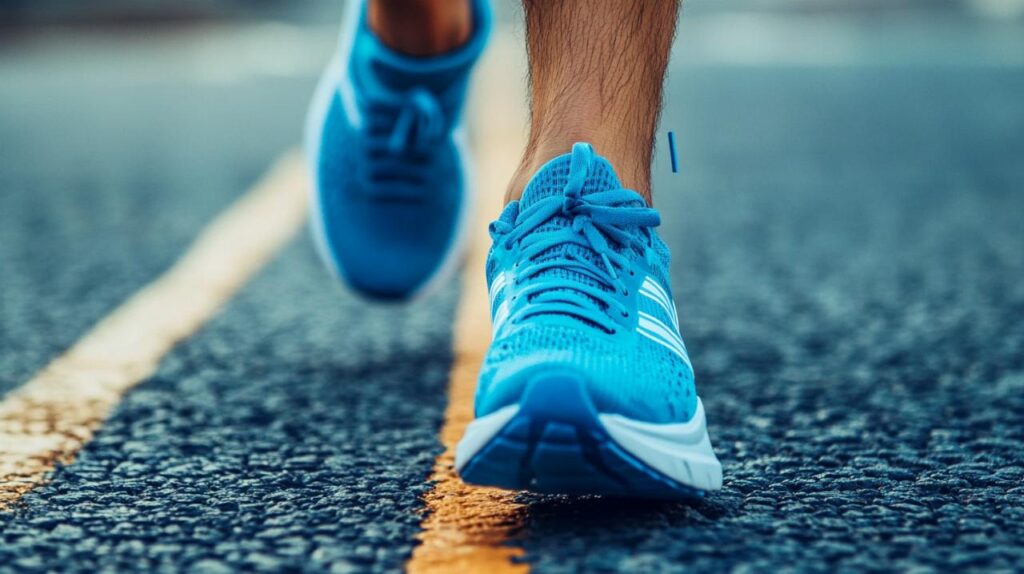Finding the perfect pair of trainers can feel like a proper puzzle, especially when you’re trying to match them to the way your feet naturally land with each stride. The relationship between your foot strike pattern and the trainers you choose is absolutely vital for comfort, performance, and keeping those niggling injuries at bay. Whether you’re pounding the pavements in London or tackling trails in the countryside, understanding how your foot hits the ground is the first step towards making a smarter choice. Much like browsing reviews on a compralab website to compare products before you buy, taking time to assess your own running mechanics pays dividends in the long run.
Understanding your foot strike pattern and why it matters
Your foot strike pattern refers to which part of your foot makes contact with the ground first during your running stride. It’s a fundamental aspect of your natural gait and has a significant impact on how forces are distributed through your legs and joints. Recognising your own pattern is crucial because it influences everything from the type of cushioning you need to the level of support that will keep you running comfortably mile after mile.
The Three Types of Foot Strike: Heel, Midfoot, and Forefoot
There are three primary types of foot strike that runners exhibit. The rearfoot strike, commonly known as heel striking, occurs when the heel makes initial contact with the ground. This is by far the most common pattern, with research showing that approximately ninety-four per cent of runners are heel strikers. In one extensive study observing nearly two thousand runners, the dominance of this pattern was clear. The midfoot strike happens when the middle section of the foot lands first, distributing impact more evenly across the foot. Finally, the forefoot strike involves landing on the ball of the foot before the heel touches down, a pattern often seen in sprinters and elite distance runners, though it remains relatively rare among recreational joggers.
Interestingly, many runners struggle to accurately identify their own foot strike pattern. Cross-country runners correctly self-identified their pattern only fifty-six and a half per cent of the time, whilst recreational runners managed just forty-three and a half per cent accuracy. When video analysis was used to verify self-reported patterns, only sixty-eight per cent of runners were spot on. This highlights the importance of proper gait analysis, which is available at specialist running shops, to truly understand how your feet interact with the ground.
How your natural gait affects trainer selection
The way your foot lands directly influences the type of trainer that will serve you best. Heel strikers, for instance, benefit enormously from trainers with generous cushioning at the rear of the shoe and a heel stack height of at least thirty millimetres. This extra padding helps absorb the significant impact forces that can reach two to three times your body weight with each stride. Without adequate shock absorption, heel strikers face a higher risk of injuries. Studies have shown that rearfoot striking runners are two point six times more likely to experience mild injuries and two point four times more likely to suffer moderate injuries compared to those who land on their midfoot or forefoot. Conditions such as hip pain, knee discomfort, lower back pain, tibial stress injuries, plantar fasciitis, and stress fractures in the lower limb bones are considerably more frequent among heel strikers.
Midfoot strikers tend to enjoy a more balanced distribution of forces and can often opt for neutral trainers that offer a versatile blend of cushioning and flexibility. Forefoot strikers, on the other hand, require trainers with responsive cushioning at the front of the shoe and a lower heel-to-toe drop to encourage a natural stride. However, it’s worth noting that changing your foot strike pattern is not recommended for uninjured rearfoot strikers, as switching to a midfoot or forefoot strike does not necessarily improve running economy, eliminate impact, or reduce injury risk. The key is to work with your natural gait rather than against it.
Matching trainers to your individual foot mechanics
Once you’ve identified your foot strike pattern, the next step is to match that knowledge with the right trainer features. This goes beyond simply picking a popular model off the shelf; it involves understanding the specific technologies and design elements that complement your individual biomechanics. The right trainer can transform your running experience, making each session more enjoyable and significantly reducing the likelihood of injury.
Cushioning and Support Features for Different Strike Patterns
Cushioning is perhaps the most critical feature to consider when selecting trainers based on your foot strike. Heel strikers should prioritise trainers with high shock absorption values, ideally above one hundred and thirty SA, to manage the considerable forces generated at the heel. A stable ride with a wider base is also essential, particularly for those who overpronate, meaning their foot rolls inward excessively upon landing. Stability shoes are specifically designed for overpronators, offering additional support to guide the foot through a more neutral motion. Trainers with a heel drop of eight millimetres or higher are also beneficial for heel strikers, as they help cushion the initial impact and reduce strain on the Achilles tendon and calf muscles.
Midfoot strikers often thrive in neutral shoes, which provide a balanced level of cushioning without excessive support features that might interfere with their natural gait. These trainers typically have a mid-range heel drop of five to eight millimetres, offering versatility and comfort for a variety of running styles. Forefoot strikers, meanwhile, benefit from trainers with excellent energy return at the front of the shoe. The average energy return at the forefoot across all running shoes sits at around sixty per cent, whilst shock absorption averages one hundred and five SA. Trainers with responsive foam and a lower heel-to-toe drop of one to four millimetres encourage a natural, efficient stride for those who land on the ball of their foot.
It’s also important to consider the surfaces you’ll be running on. Road running shoes are designed for pavements and tarmac, offering lightweight cushioning and flexibility. Trail running shoes, by contrast, are built for off-road adventures, featuring rugged outsoles with deeper lugs for traction on uneven terrain. Track running shoes are optimised for use on athletic tracks, providing minimal cushioning but maximum responsiveness. Lightweight and race running shoes have flexible cushioning designed to decrease fatigue and pain after a run, making them ideal for tempo sessions and race day.

Preventing common running injuries through proper footwear choice
Selecting the right trainers based on your foot strike pattern is one of the most effective ways to prevent common running injuries. Heel strikers are at a heightened risk for a range of ailments, including hip, knee, and lower back pain, as well as tibial stress injuries and plantar fasciitis. These conditions are two to four times more frequent in rearfoot strikers compared to midfoot or forefoot strikers. By choosing trainers with adequate heel cushioning, good shock absorption, and a stable base, heel strikers can significantly mitigate these risks. Outsole rubber at the heel is another important feature, as it provides durability and grip at the point of contact.
Overpronators, regardless of their foot strike pattern, should look for stability shoes that offer structured support to prevent excessive inward rolling of the foot. Neutral pronators, who experience a slight and efficient inward roll, can opt for neutral shoes that allow their natural gait to function without interference. Supinators, whose feet roll outward, require trainers with ample cushioning to absorb the increased strain placed on the outer edge of the foot. Proper pronation assessment is best done through gait analysis, a service offered by specialist running shops, where trained staff can observe your stride and recommend the most suitable trainers.
It’s also crucial to replace your trainers regularly. Running shoes typically last between three hundred and five hundred miles, depending on your weight, running style, and the surfaces you frequent. If you run occasionally, it’s wise to replace your trainers every six months to ensure they continue to provide adequate support and cushioning. Worn-out trainers lose their shock-absorbing properties, increasing the risk of injury. Taking the time to measure both feet, try on trainers with the socks you’ll be running in, and allow for a bit of toe movement can make all the difference in finding a pair that fits perfectly and supports your unique foot mechanics.
Avoiding certain types of trainers is equally important. Heel strikers should steer clear of carbon-plated shoes designed for forefoot strikers, as these often have aggressive rocker geometries that don’t suit a heel-first landing. Minimalist and barefoot running shoes, which have little to no cushioning and a zero drop, are also unsuitable for heel strikers, as they can exacerbate the impact forces and increase injury risk. By understanding your foot strike pattern and selecting trainers that align with your natural gait, you’ll be well on your way to more comfortable, injury-free running. Whether you’re training for a marathon, enjoying a leisurely jog, or exploring new trails, the right trainers are your most valuable piece of kit.


